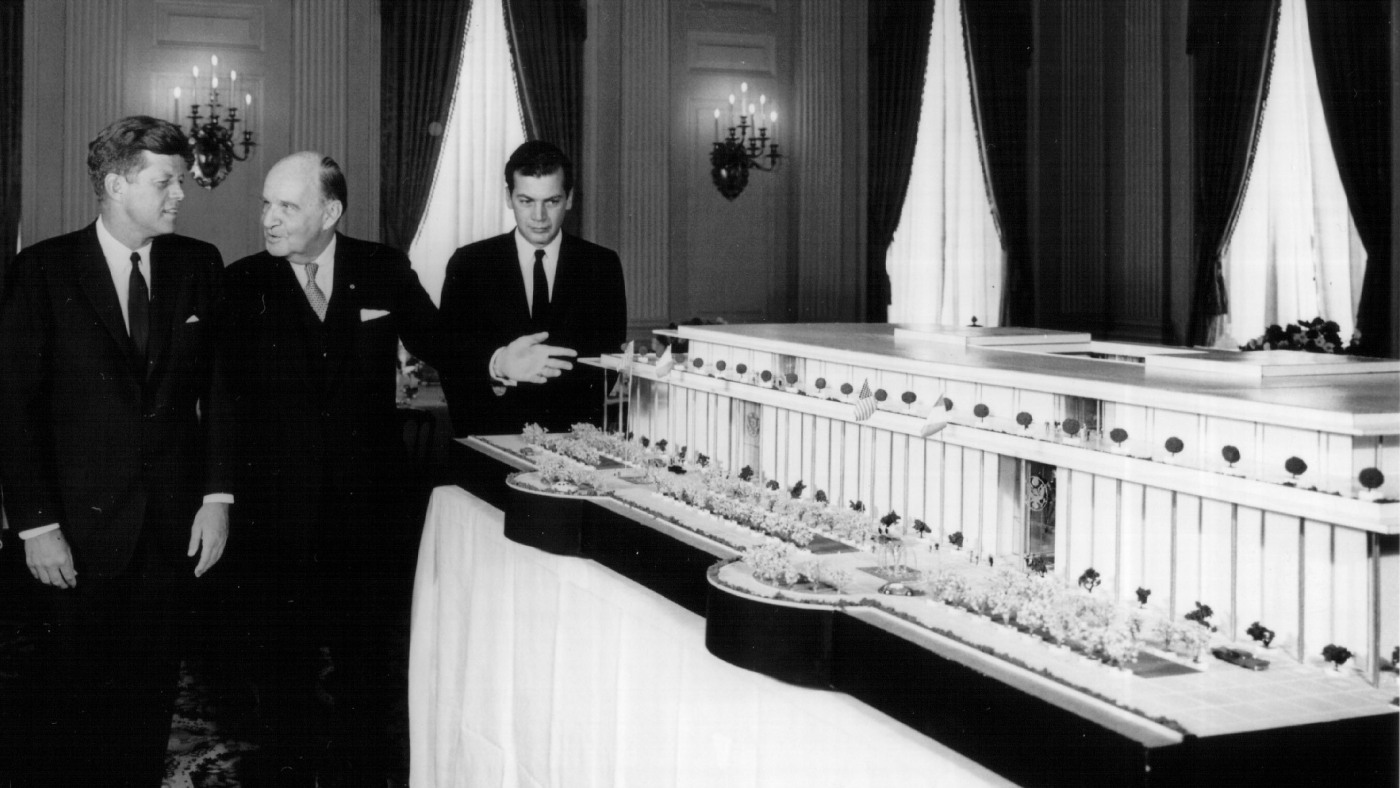Rotary Club of Wilmington hosts Meet the Mayor’s candidate forum
Former City Treasurer Velda Jones-Potter and Gov. John Carney make closing statements at the Rotary Club of Wilmington’s Meet the Mayor’s candidate forum.
Candidates battling to become Delaware’s next governor laid out their plans Thursday for education, infrastructure, immigration and other key issues.
The Rotary Club of Wilmington hosted a state gubernatorial debate on Thursday afternoon. The debate followed a similar Wednesday night event held by the Delaware Journalism Collaborative.
Five of the six candidates facing off next month in the Delaware primaries participated in Thursday’s debate: Democrats Lt. Gov. Bethany Hall-Long, New Castle County Executive Matt Meyer and former Department of Natural Resources and Environmental Control Secretary Collin O’Mara; and Republicans Delaware House Rep. Mike Ramone and businessman Bobby Williamson – met to discuss key issues surrounding the First State.
The third Republican candidate, Jerrold Price, did not attend.
What did the candidates talk about?
After opening remarks, each candidate faced questions on a variety of topics.
Candidates were asked what actions they would take as Governor if federal deportation of immigrants was implemented. The question referenced a recent WHYY report regarding the difficulties many immigrants in both the First State and the country face in obtaining citizenship
O’Mara said he would take steps to help Delaware become “the most welcoming state” for immigrant communities, including providing access to affordable housing and quality education.
Ramone stated he would “go to the problem itself” and find new ways of amending and modifying different pathways to citizenship to be more attainable and achievable via bipartisan support.
Candidates were asked what policies or initiatives candidates would implement to expand early childhood education across the First State.
Williamson advocated for private, charter and vocational schools as additional choices for children and parents alike.
Meyer talked about the importance “quality [and] top-notch” education, proposing working alongside businesses to provide incentives for on-set childcare and initiating early nursing programs and partnerships for low-income families.
Another question focused on candidates’ strategies for updating and restoring statewide infrastructure.
Williamson noted the importance of community input when making improvements to infrastructure and overall efficiency, such as addressing which roads and pathways need repair.
Citing his past experiences lobbying for the passage of legislation such as the Inflation Reduction Act of 2022, O’Mara said we need to preserve the framework of the past while also “building the infrastructure of the 21st century,” such as utilizing clean and renewable energy resources like solar power and offshore wind.
Candidates were asked how they would best reflect the core values upheld by the Rotary Club – which include service, leadership, diversity, fellowship and integrity – in their respective administrations.
Hall-Long said she has embodied these same values throughout her years in public service, and how, as a self-described “innovator,” plans to invest in fair, equitable solutions that work for all.
Meyer said he abides by those same values in his role as New Castle County Executive, establishing this expectation for all employees and members of his team on day one to be “a government of principles” that best serves the needs of all people – an expectation, he says, he plans to take with him to the Governor’s office.
Candidates also were asked how they would contribute to the presence of arts and culture throughout the First State.
Citing the influence of his own family, Ramone explained how continued investment of the arts across Delaware will not only help preserve the value and appreciation for the field, but also unite people across different political lines together.
Hall-Long stressed how supporting the “creative economy” of Delaware, specifically uplifting the presence of women and BIPOC-owned businesses, as being “absolutely paramount.”
For their last question, candidates were asked why Delawareans should vote for them in the upcoming primary elections, set to take place on Sept. 10.
Hall-Long reiterated her intentions to better strengthen state education and healthcare systems, saying “innovation [and] new ideas is what you’ll get” under her leadership.
Meyer said, in order to better prepare for the future of Delaware, change must start in the present, including electing leaders that “have public service, not self-service.”
O’Mara noted how his campaign is about making “significant changes” that provide hope and opportunity for the next and for future generations.
Ramone stated how his experiences as both a businessman and state House Representative has shaped him into the kind of “problem-solver” who will do their best for the First State.
A third-generation Bridgeville resident, Williamson credited his knowledge of the area and his belief in granting everyone a voice will lead Delaware into a brighter, more equitable future.
Olivia Montes covers state government and community impact for Delaware Online/The News Journal. Reach her at omontes@delawareonline.com.
An in-depth look: Delaware’s governor race gets crowded with 3-way primary for Republicans, Democrats










































